Austrian Civil War
The Austrian Civil War (German: Österreichischer Bürgerkrieg), also known as the February Uprising (German: Februarkämpfe), is a term sometimes used for a few days of skirmishes between Fascist and Socialist forces between 12 and 16 February 1934, in Austria. The clashes started in Linz and took place principally in the cities of Vienna, Graz, Bruck an der Mur, Judenburg, Wiener Neustadt and Steyr, but also in some other industrial cities of eastern and central Austria.[6]
| Austrian Civil War | |||||||
|---|---|---|---|---|---|---|---|
| Part of the Interwar Period | |||||||
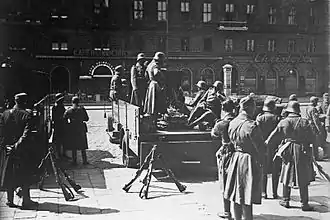 Soldiers of the Austrian Federal Army in Vienna, 12 February 1934 | |||||||
| |||||||
| Belligerents | |||||||
|
| |||||||
| Commanders and leaders | |||||||
|
Richard Bernaschek Ludwig Bernaschek |
Engelbert Dollfuss Emil Fey | ||||||
| Strength | |||||||
|
80,000 in all of Austria[1] 17,500 soldiers in Vienna[2] Floridsdorf cache: over 2,500 rifles 250 revolvers 1,500 hand grenades 10,000 rounds of ammunition[3] | Entire Federal Army, police, gendarmeries, and paramilitary Heimwehr forces | ||||||
| Casualties and losses | |||||||
|
Estimated 137[2] 196[4] to 1,000 possibly killed[5] 399 wounded[2] 10 executed later[4] |
Estimated between 105[2] to 118 killed in action[4] 319 wounded[2] | ||||||
Origins of the conflict
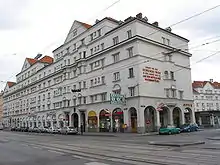
Part of a series on the |
|---|
| History of Austria |
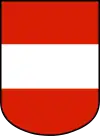 |
|
|
After the end of the Austro-Hungarian Empire in 1918, the state of Austria was created as a parliamentary democracy. Two major factions dominated politics in the new nation: socialists (represented politically by the Social Democratic Workers' Party) and conservatives (politically represented by the Christian Social Party). The socialists found their strongholds in the working class districts of the cities, while the conservatives could build on the support of the rural population and of most of the upper classes. The conservatives also maintained close alliances with the Catholic Church, and could count among their ranks some leading clerics.
As in most of the nascent European democracies of the time, politics in Austria took on a highly ideological flavour. Both the socialist and the conservative camp did not merely consist of political parties, but possessed far-ranging power structures, including their own paramilitary forces. The conservatives began organising the Heimwehr (German: Homeguard) in 1921–23; in response, the Social Democrats organised paramilitaries called the Republikanischer Schutzbund (German: Republican Protection Association) after 1923. Altercations and clashes between these forces (at political rallies, etc.) occurred frequently.
A first major incident ensued early in 1927, when members of Hermann Hiltl's Frontkämpfervereinigung ("Front Fighters Union" — a paramilitary association likewise affiliated with the conservative camp) shot and killed an eight-year-old boy and a war veteran marching with the Schutzbund in a peaceful counter-demonstration in Schattendorf (Burgenland). In July, three defendants in the case were acquitted, which led to outrage in the left-wing camp. On 15 July 1927, a general strike occurred, and demonstrations took place in the capital. After the storming of a police station, security forces started shooting at demonstrators. An angry group of people then set fire to the Palace of Justice (Justizpalast), seen as a symbol of a flawed and partial judicial system. Altogether, 89 people (85 of them demonstrators) lost their lives in this July revolt, and many hundreds suffered injury. Surprisingly, the violence soon died down and the factions took their battle from the streets back into the political institutions.
However, the travails of the First Republic only got worse in the following years. The Great Depression also showed its effects in Austria, resulting in high unemployment and massive inflation. In addition, from 1933 — the year Adolf Hitler became Chancellor of Germany — National Socialist sympathisers (who wanted a unification of Austria with Hitler's Germany) threatened the Austrian state from within.
Conflict
On 4 March 1933, Christian Social Chancellor Engelbert Dollfuß suspended the Austrian Parliament. In a close vote (on railway workers' wages) in the National Council, each of the three presidents of parliament resigned their position in order to cast a ballot, leaving nobody to preside over the meeting. Even though the bylaws could have resolved this situation, Dollfuss used this opportunity to declare that parliament had ceased to function, and blocked all attempts to reconvene it, also threatening to use military force against the parliamentarians, should they try to reconvene. The Social Democratic Party had thus lost its major platform for political action. The conservatives, facing pressure and violence not only from the left but also from Nazis infiltrating from Germany, could now rule by decree on the basis of a 1917 emergency law, without checks on their power, and began to suspend civil liberties. They banned the Schutzbund and imprisoned many of its members.

On 12 February 1934, a force, led by Heimwehr commander in Vienna Emil Fey, searched Hotel Schiff in Linz, a property belonging to the Social Democratic Party. Linz Schutzbund commander Richard Bernaschek was the first to actively resist, sparking off armed conflict between a conglomeration of the Heimwehr, the police, the gendarmerie and the regular Federal Army against the outlawed, but still existent, socialist Schutzbund.[7] Skirmishes between the two camps spread to other cities and towns in Austria, with the heat of the action occurring in Vienna. There, members of the Schutzbund barricaded themselves in city council housing estates (Gemeindebauten), the symbols and strongholds for the socialist movement in Austria, such as Karl-Marx-Hof. Police and paramilitaries took up positions outside these fortified complexes and the parties exchanged fire, initially only with small arms. Fighting also occurred in industrial towns such as Steyr, Sankt Pölten, Weiz, Eggenberg (Graz), Kapfenberg, Bruck an der Mur, Graz, Ebensee and Wörgl.
An apparently decisive moment in the events came with the entry of the Austrian armed forces into the conflict. Though the army remained still a comparatively independent institution, chancellor Dollfuss ordered Karl-Marx-Hof shelled with light artillery, endangering the lives of thousands of civilians and destroying many flats before forcing the socialist fighters to surrender.[8] The fighting ended in Vienna and Upper Austria by 13 February, but continued heavily in Styrian cities, especially in Bruck an der Mur and Judenburg, until 14 or 15 February. After that, there were only small groups of socialists fighting against the armed forces, or fleeing from them. By 16 February 1934, the Austrian Civil War had ended.
Fallout
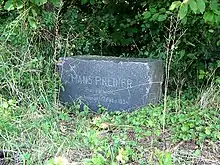
Several hundred people (including paramilitaries, members of the security forces and civilians) died in the armed conflict; more than a thousand suffered wounds. The authorities tried and executed nine Schutzbund leaders under the provisions of martial law. In addition, over 1,500 arrests were made. Leading socialist politicians, such as Otto Bauer, were forced into exile.[9] John Gunther reported that Schutzbund members received "mercilessly severe" sentences.[10]
The incidents of February 1934 were taken as a pretext by the government to prohibit the Social Democratic Party and its affiliated trade unions altogether. In May, the conservatives replaced the democratic constitution by a corporatist constitution modelled along the lines of Benito Mussolini's fascist Italy; therefore the socialists coined the term 'Austrofascism' although the underlying ideology was essentially that of the most conservative elements in the Austrian Catholic clergy, a feature inconsistent with both Italian Fascism and Nazism. The Patriotic Front (Vaterländische Front), into which the Heimwehr and the Christian Social Party were merged, became the only legal political party in the resulting authoritarian regime, the Ständestaat.
Long-term effects
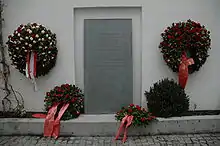
Though small in scale in an international comparison (and small in scale indeed in the light of the events of the Second World War which soon followed), the Austrian Civil War nevertheless proved a decisive moment in the history of the Republic. After the Second World War, when Austria re-emerged on the political landscape as a sovereign nation, politics again fell under the domination of the Social Democrats and the conservatives, who now formed a party called the Austrian People's Party (ÖVP). However, so as to avoid a repeat of the bitter divisions of the First Republic, the leaders of the Second Republic were determined to put the idea of broad consensus at the heart of the new political system. The concept of the 'Grand Coalition' was introduced, in which the two major parties (Social Democrats and People's Party) shared in the government and avoided open confrontation. This system brought with it stability and continuity, but ultimately led to other political repercussions (also see Proporz). But the events of the Austrian Civil War had persuaded many in the political establishment (and, indeed, the population at large) that a slow pace of political reform was a small price to pay for social stability.
References
- Jelavich 183.
- Brook-Shepherd 281.
- Brook-Shepherd 282.
- Jelavich 202.
- Lehne 136.
- Frederick L. Schuman, Europe On The Eve 1933-1939 (1939) pp 55-92 online.
- Brook-Shepherd 280–81.
- Reppe 79.
- Brook-Shepherd 283.
- Gunther, John (1940). Inside Europe. New York: Harper & Brothers. p. 416.
Further reading
- Bischof, Gunter J., Anton Pelinka, and Alexander Lassner, eds. The Dollfuss/Schuschnigg Era in Austria: A Reassessment (Transaction Publishers, 2003).
- Brook-Shepherd, Gordon (December 1996). The Austrians: A Thousand-Year Odyssey. HarperCollins. ISBN 0-00-638255-X.
- Jelavich, Barbara (December 1989). Modern Austria: Empire & Republic 1815–1986. Cambridge University Press. ISBN 0-521-31625-1.
- Lehne, Inge; Lonnie Johnson (1985). Vienna: The Past in the Present. Österreichischer Bundesverlag Gesellschaft, Wien. ISBN 3-215-05758-1.
- Schuman, Frederick L. Europe On The Eve 1933-1939 (1939) pp 55–92 online
- This article includes information translated from the German-language Wikipedia article de:Österreichischer Bürgerkrieg.